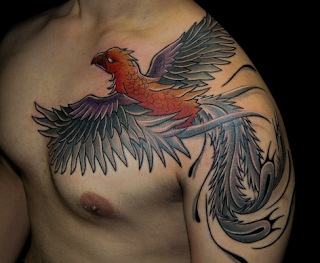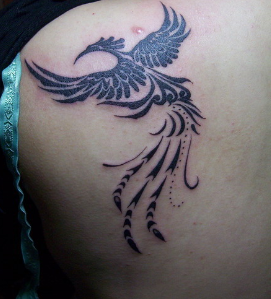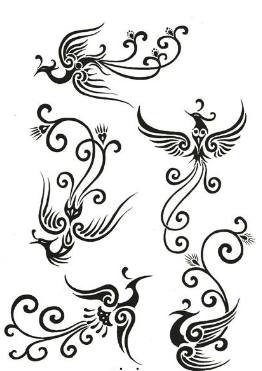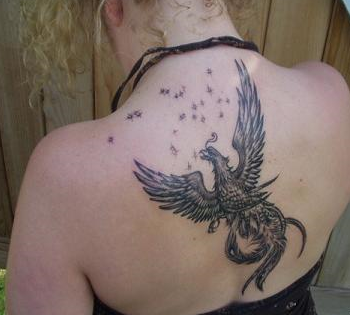Once produced, the worm is nourished and brings forth feathers. Once it gains the strength, it takes up the nest and bones of its parent. The Phoenix represents rebirth, is the only creature that is known to rise from its own ashes. In this story, it takes the Phoenix three days to rise once it has passed. This is very similar to the ressurection of Jesus Christ. When the Phoenix enters its nest to die, it turns into fire. This is why the Phoenix is associated with fire. Due to its relationship with the ressurection of Jesus, the Phoenix can also represent Christianity.
In most traditional styles, the Phoenix tattoo is usually red, orange, and yellow. In modern times, blue, purple, green, orange, black, and pink are all used.
Those who choose this design for symbolic purposes usually choose the traditional colors. Those who choose it for a beautiful tattoo usually choose the more vibrant colors.
With the Chinese, the phoenix was very important, with only the dragon holding a more important place in their culture. Only the Chinese Empress was allowed to wear the phoenix as a symbol, which represented the union of yin and yang, symbolizing virtue and grace.
For the phoenix itself, in the tattooing world, it is more associated with a representing a number of good qualities in a person, things like kindness, duty and being reliable, among others.
This seems to mean that those emerging from the fire and ashes end up with admirable qualities that represent being a new person
The Japanese like to entwine the phoenix with the dragon, as you can see on many of their tattoos. This also symbolizes yin and yang for the Japanese, mixing the highest qualities of the masculine and feminine together.
As with any fire, there's the sense of purification coming from heat of the fire, as represented by going through difficult times that try you as fire and transforms you into a new person if you can survive those purging times. That's the flame and fire side of it.














































